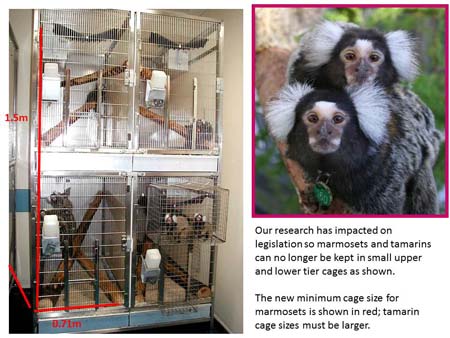Improving the welfare of captive non-human primates
Our research has made a significant contribution to improving the welfare of animals in captivity, most notably non-human primates used in laboratory research and testing, with associated improvements in the quality of scientific output. The research has had a direct impact on national (UK Home Office) and European legalisation on minimum cage sizes. Theoretical concepts of control, choice and predictability, and their association with positive reinforcement training have been incorporated into major national and international guidelines. There is evidence of changes in housing and husbandry with associated welfare improvements in laboratories, and industry have collaborated and invested in the research, given it directly impacts upon them.

Example publications
Bassett, L. & Buchanan-Smith, H. M. (2007) Effects of predictability on the welfare of captive primates. In: Swaisgood, RR (ed.) Animal Behaviour, Conservation and Enrichment. Applied Animal Behaviour Science, 102, 223 - 245.
Buchanan-Smith, H.M., Prescott, M.J. & Cross, N.J. (2004) What factors should determine cage sizes for primates in the laboratory? Animal Welfare, 13, S197-S201.
Prescott, M.J. & Buchanan-Smith, H.M. (2004). Cage sizes for tamarins in the laboratory. Animal Welfare, 13, 151-157.
